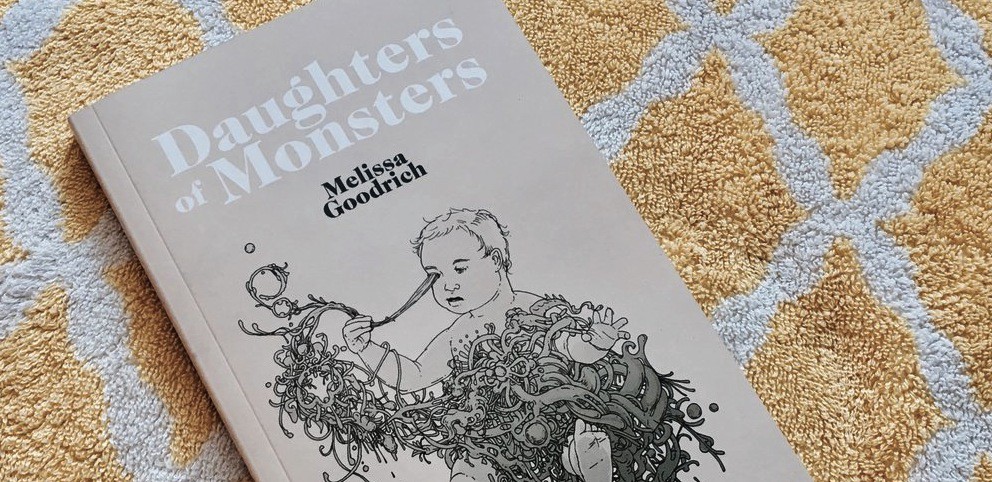“And there was what looked like a raincloud, a supernova of color in it, and that is where we, or I, went: dying. Then a snake. Tried swallowing a deer one day, died. Then a theater ticket, snug inside the wallet until one night camping: kindling. […] A bird too small to break out of its egg. An egg. A tooth plucked by a dentist. I was everything.”
(From “super,” p. 20–21)
Where do the boundaries of poetry and prose lie? Where might we draw a line between fiction and reality? Can we answer these questions? Do we have the right to?
In her short story collection, Daughters of Monsters, Melissa Goodrich seizes reality and contorts it into something barely recognizable yet stupendously tangible. The tension she creates in her work is thick like summer heat, and with each story and passing conflict, the reader feels as though reality is slipping further and further, remaining just out of reach but always within sight.
Prose is not formulaic, as proven by Goodrich’s work in this collection. She invokes poetic trappings and weaves abstractions throughout her stories. Her collection begins with a reimagining of the tale of Cinderella, and from there, she delves into the furrows of what we know as truth. Some of her work is deeply uncomfortable to consider, such as the slaughter of cherubic angels for meat processing plants, but her work is too entrancing to flinch or forfeit.
In her story, “super,” as quoted above, she writes of how a game of pretend evolves into life or death, reincarnation and rebirth. A concept snatched straight from the mind of a child, like the original child who narrates the story, dying and reemerging into the world as something new, something foreign, is whimsical yet morbid in Goodrich’s tale.
Death, as a part of every life, promenades throughout this collection, more prominently in some stories than in others. Though immortality is considered, especially in her modern reworking of the Biblical story of Noah and his ark in “a dreamless year of feeding animals,” death ultimately permeates her stories.
Originally published on July 15, 2017. Read the rest on Medium.
